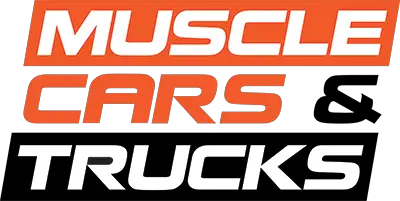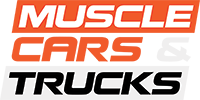The Tesla Cybertruck will launch in 2021 2022 2023. Maybe. The company stopped short of saying it would be canceled, based on what founder and CEO Elon Musk said during the company’s Q4 2021 earnings call on Wednesday, January 26, Tesla won’t be launching any new vehicles in 2022. The only real details that Musk shared on Cybertruck production were as follows:
Batteries will probably not be the limiting factor in Cybertruck production. There’s a lot of new technology in the Cybertruck that will take some time to work through. And then, there’s a question of like, what’s the average cost of Cybertruck and to what degree is that affordable? There’s — you can make something infinitely desirable. But if it’s not affordable, that will constrain people’s ability to buy it because they don’t have the money.
Further, Elon said that launching a new product in the coming year would ultimately mean less vehicles produced, meaning less vehicles sold.
In 2022, supply chain will continue to be the fundamental limiter of output across all factories. So, the chip shortage, while better than last year, is still an issue. And yes, so that’s — there are multiple supply chain challenges. And last year was difficult to predict and hopefully, this year will be smooth sailing, but I’m not sure what you do for an encore to 2021, 2020. Nonetheless, we do expect significant growth in 2022 over 2021, comfortably above 50% growth in 2022…
…If we were to actually introduce a new product, that would then require a bunch of attention and resources of the increased complexity of the additional product, resulting in fewer vehicles actually being delivered. The same is true of this year. We will not be introducing new vehicles this year, because we will still be parts constrained (Cybertruck, Semi, Roadster, Optimus)… hopefully next year. It is dependent on whether we are able to produce more cars or fewer cars.

Tesla FSD Technology Taking Priority Over New Vehicles, Cybertruck
Bernstein analyst Toni Sacconaghi was able to ask Elon a question regarding how the company would be able to maintain sales growth of 50 percent or greater each year (selling as much as 3.2 million vehicles by 2024) without new products like the Tesla Cybertruck hitting the market,
Instead of answering the question, Musk deflected to promote more of Tesla’s FSD technology, and its potential.
Yes. I mean, it’s apparent from the questions that the gravity of Full Self-Driving is not fully appreciated. If an asset has 5 times more utilization than the — it’s like dividing the cost of that asset by 5. So, if you have a $50,000 car, it’s like having a $10,000 car all of a sudden, but maybe better than that because still you don’t want to drive. So the person can be engaged in productivity or amusement instead of having to onerously drive through traffic. So, it’s probably better than 5 times, I don’t know. Yes. I mean, basically, if the cost of our cars do not change at all, we would still sell as many as we could possibly make.

The richest person in the world in terms of unrealized gains also deflected questions of a sub-$30,000 car, which could relieve consumers as they are getting buried in record ATPs in both the new and used vehicle market. Again, deflecting to FSD technology. In that regard, he stated the following answer to an investor question:
We’re not currently working on a $25,000 car. At some point, we will, but we have enough on our plate right now, too much on our plate, frankly. So, at some point, there will be. I think that’s sort of a question that — it’s sort of the wrong question. Really, it’s really the thing that overwhelmingly matters is when is the car autonomous? I think, at the point in which it is autonomous, the cost of transport drops by, I don’t know, a factor of 4 or 5.
Musk points to current trends of driver absenteeism as to why Tesla FSD will easily surpass human capability.
Frankly, being safer than a human is a low standard, not a high standard. People are very, very lossy, often distracted, tired, texting. Anyway, it’s remarkable that we don’t have more accidents. So, it’s — yes. So actually being better than a human, I think, is relatively very forward, frankly, how do you be 1,000% better or 10,000% better? That’s what gets much harder.

He’s right. human driving ability is naturally slipping due to distractions from technology, largely smartphones. Some research suggests that it’s even worse than imparied/drunk driving, but you don’t see any bills trying to mandate a vehicle kill switch targeted towards texting and driving for some reason. However, as evident in motorsports and with the accessibility of performance driving education, human driving can exponentially improve, in relatively little time and with relatively little money. The missing ingredient is the discipline to do so.
As a result of dulling human skills, Tesla sees this is a major, major opportunity to unlock more value out of an automobile via Full Self Driving (FSD) technology. Musk summarizes it like this:
Full Self-Driving. So, over time, we think Full Self-Driving will become the most important source of profitability for Tesla. It’s — actually, if you run the numbers on robotaxis, it’s kind of nutty — it’s nutty good from a financial standpoint. And I think we are completely confident at this point that it will be achieved. And my personal guess is that we’ll achieve Full Self-Driving this year, yes, with data safety level significantly greater than present.
So, it’s — the cars in the fleet essentially becoming self-driving by a software update, I think, might end up being the biggest increase in asset value of any asset class in history. We shall see. It would also have a profound impact on improving safety and on accelerating the world towards sustainable energy through vastly better asset utilization. Let’s see…
…I mean, it’s going to be — I think it’s way cheaper to point with robotaxi, which is an autonomous Tesla, which every car we’ve made in the past, three or four years will be capable of that than a bus or a subway. It will cost less than the subsidized value of a bus ticket. So, if we want to get — I’m not going to take the bus, you know, if it costs you, I don’t know, for argument’s sake, $2 to travel 10 miles point to point, nobody’s taking the bus, especially in cold weather or it’s dark or maybe a little bit dangerous or how bad, you know. People just do not understand how profound a change this is.
With the supposed revenue potential of FSD technology, Tesla seems to be softly switching its outward priorities from vehicles like the Cybertruck, Roadster and Semi, and to more forward-thinking and idealistic technology that will multiply the value of its electric vehicles while also allowing for passengers to engage in more “productivity and amusement.”
Welcome the the future.






One Comment
Leave a ReplyOne Ping
Pingback:Tesla Cybertruck Stops Taking Reservations In Europe, China